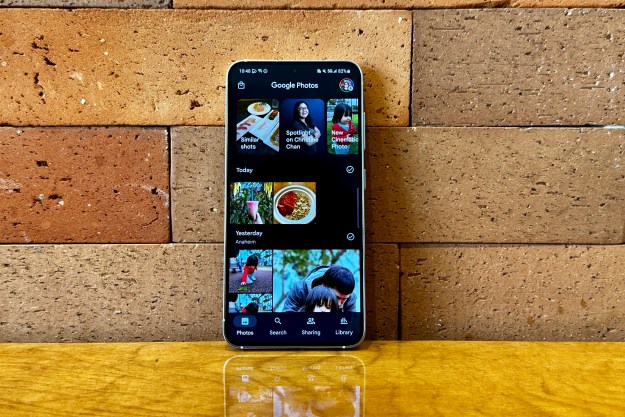Fingerprint scanning is hot right now. The iPhone 5S pushed the concept into the limelight last fall, and now Samsung’s competing Galaxy S5 has a built-in sensor as well. Everyone wants a piece of the action, but why do fingerprint sensors have to be attached to our phones at all? Sonavation wants everyone to have a new kind of fingerprint sensor, one that will attach right to your house keys. Called the AxisKey (yeah, bad name), it’s about the size of your normal car-unlocking key fob, but has a high-tech ultrasound fingerprint scanner where you’d normally find an unlock button. Sonavation plans to start an Indiegogo campaign to help fund the device in April.
One key to rule them all
So … what’s so cool about a key fob? Well, it has a battery that can last several months, it’s extremely secure, it can’t be used by a thief, it can’t be hacked (mostly), and it will work just as well, if not better than any scanner on a phone. If the world leans Sonavation’s way, this one key fob could unlock your car, front door, and anything else in the real world, but also help you verify purchases at the store, verify purchases online, unlock your phone, unlock your PC, securely log into websites without a password, and almost anything else. If you need to verify who you are, this system might be the most efficient way to do it.

Unlike Apple’s iPhone 5S Touch ID fingerprint sensor, which takes an actual image of your finger, Sonavation’s sensor uses ultrasound technology to map your fingerprints with sound the same way a dolphin might map the sea bottom with sound. Instead of sticking your finger on the sensor, you swipe it across with this technology. Ultrasound helps Sonavation compare far more accurate pictures of the skin than Apple’s imaging technique, according to Bob Stewart of Sonavation.
“We’ve got about 35 awarded patents and 75 pending patents on this technology, so we really secured this whole idea of using ultrasound for biometric identification,” explained Stewart.
Your biometric data is kept securely on the device and never leaves. Once you set it, the ultrasound sensor simply checks to see if the pattern of the finger scanned matches the one that is registered. If it is, it opens a secure Bluetooth LE connection with your device (car, house door, Facebook account) sends an approval key, and then unlocks it, or whatever else you’ve set it up to do. This is assuming the websites are FIDO compliant and your car or front door can be opened wirelessly. This kind of technology is coming into the mainstream quickly.
Because it uses Bluetooth Low Energy and doesn’t connect unless you’re doing something, the battery can last several months at a time. A reminder light lets you know you have about a week left before you need to plug in a Micro USB charger for a couple hours to charge it.
Ultrasound could scan the finger behind your prints
Fingerprinting is a positive step forward for security, but it won’t end up being much better than passwords in its current form because we leave copies of our fingerprints on everything we touch. Soon, there will probably be scanners and high-resolution 3D printers that could recreate a finger from a print on a Coke can. That kind of technology is getting cheaper. Once it is widely affordable, your fingerprint won’t be any safer than your signature or that password you can never remember. But ultrasound may come to the rescue.
By next year, Sonavation will have working ultrasound biometric scanners capable of scanning the inside of your finger – the tissue and veins behind your finger. Unlike our prints, this actually may be secure.

“It actually sees into your finger and creates a biometric that’s 10x more powerful than a fingerprint,” said Stewart. “Unlike how [hackers tricked the iPhone 5S Touch ID sensor] in under 24 hours, this is not spoofable, because you don’t leave the internals of your fingerprint behind everywhere you touch.”
He said the new tech will work much like the ultrasound scanners doctors use to take images of babies during pregnancy.
Beyond key fobs and into your phone
Sonavation is concentrating on this key fob plan first, but it will try to sell its next sensor to other companies, including mobile phone manufacturers.
“What makes it interesting to the mobile space,” said Stewart. “[We could] put the sensor underneath the glass and image all the way through the full stack up of the mobile device to capture a fingerprint that’s touching the surface of the phone. And not just the fingerprint, the underlying vasculature that makes up the internal anatomical structure.”
If Sonovation has its way, your next phone may know if you’re its owner the second you turn on the screen, and no high-res picture will be able to fool it.
Editors' Recommendations
- iOS 18 could make my iPhone look like Android, and I hate it
- This company just announced lots of new Android phones, and they look great
- How to unlock a phone on every carrier in 2024
- Your Android phone just got an update that could save your life
- It’s finally happening — OnePlus will release a folding phone this year


